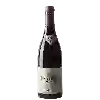
Winery Marcel de NormontAloxe Corton
This wine generally goes well with poultry, beef or veal.
Food and wine pairings with Aloxe Corton
Pairings that work perfectly with Aloxe Corton
Original food and wine pairings with Aloxe Corton
The Aloxe Corton of Winery Marcel de Normont matches generally quite well with dishes of beef, veal or game (deer, venison) such as recipes of barbecue burger, oven-baked veal cutlets or rabbit fillet with mustard.
Details and technical informations about Winery Marcel de Normont's Aloxe Corton.
Discover the grape variety: Alicante Nera
Alicante Henri Bouschet noir is a grape variety that originated in France (Languedoc). It produces a variety of grape specially used for wine making. It is rare to find this grape to eat on our tables. This variety of grape is characterized by large bunches of grapes of medium size. The Alicante Henri Bouschet noir can be found in several vineyards: South-West, Cognac, Bordeaux, Languedoc & Roussillon, Rhone valley, Provence & Corsica, Loire valley, Savoie & Bugey, Beaujolais, Armagnac.
Informations about the Winery Marcel de Normont
The Winery Marcel de Normont is one of of the world's great estates. It offers 31 wines for sale in the of Aloxe-Corton to come and discover on site or to buy online.
The wine region of Aloxe-Corton
The wine region of Aloxe-Corton is located in the region of Côte de Beaune of Burgundy of France. Wineries and vineyards like the Domaine Maillard Père & Fils or the Domaine Michel Gay & Fils produce mainly wines red and white. The most planted grape varieties in the region of Aloxe-Corton are Pinot noir, Chardonnay and Pinot gris, they are then used in wines in blends or as a single variety. On the nose of Aloxe-Corton often reveals types of flavors of cherry, vegetal or vanilla and sometimes also flavors of licorice, plum or pepper.
The wine region of Burgundy
Bourgogne is the catch-all regional appellation title of the Burgundy wine region in eastern France ("Bourgogne" is the French name for Burgundy). Burgundy has a Complex and comprehensive appellation system; counting Premier Cru and Grand Cru titles, the region has over 700 appellation titles for its wines. Thus, Burgundy wines often come from one Vineyard (or several separate vineyards) without an appellation title specific to the region, Village or even vineyard. A standard Burgundy wine may be made from grapes grown in one or more of Burgundy's 300 communes.
The word of the wine: Serious
A Bordeaux term for small pebbles from the Pyrenees, eroded, rounded and transported by the Garonne to Aquitaine. They are mainly found on the left bank in the area.... known as the Graves, and further downstream in the Médoc. By extension, gravel is found in other regions, brought by other rivers or even glaciers.














